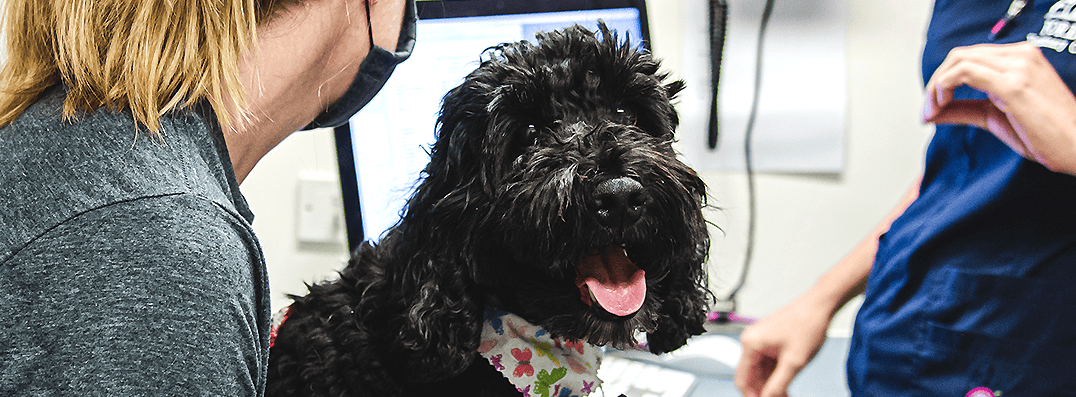We understand that getting your furry friend to take their medication can sometimes feel like a challenge. Here we’ve compiled a handy guide to help make giving your pet medicine a much smoother experience for both of you.
Ensuring the right dosage:
The first step is to ensure you're providing the right dosage for your pet. Here's how to get the dosage correct when administering at home:
- Consult your vet: Always consult your vet to determine the correct dosage based on your pet's weight, age and health condition.
- Always read the label: Read the medication label closely, paying attention to dosage instructions and any special administration notes. If you’re unsure, please consult your vet to double check the dosage.
- Use the right tools: Invest in the right tools for the job. Syringes, or chewable alternatives can make the process more convenient for both you and your pet. Your nurse or vet can advise alternative medication methods.
Be sure to contact your local vet in Essex and London if your pet needs medication at home.
Top tips for medicating your pets at home:
Below, we’ve put together some top tips on making medication time a more pleasant experience for you and your pet.
Disguise medication:
Hide pills in tasty treats or soft foods. Xylitol-free peanut butter, cream cheese or even a dollop of canned pet food can be life savers.
Distract your pet:
Try administering medication during playtime or walks. A distracted pet is less likely to make a fuss when given medication.
Praise your pet:
Use your most convincing voice and praise your pet – positive reinforcement works wonders.
Don’t give them chance to react:
Often medication time can become a challenge because your pet has had chance to realise what’s going on and make a fuss. Try sliding a pill into your pet’s mouth when they least expect it, followed by a treat as a distraction.
Check with your vet if pills can be crushed:
For pets that won't tolerate pills, ask your vet if the medication can be crushed and sprinkled onto their food. Just be sure to check with your vet first, as some medications may lose effectiveness when crushed, or could even have negative health effects on yourself.
Create a routine:
Consistency is key. Establish a routine for medication time, making it a predictable and less stressful experience for your pet.
Bonus tips for cats
Opt for soft or liquid medication
Cats are often more finicky, so opt for liquid medications or ask your vet about alternatives. Mix the liquid with a tasty treat for a feline-friendly approach.
Stay patient:
Cats may need a bit more coaxing. Patience and gentle encouragement can go a long way in convincing your feline friend to embrace their medication. If they enjoy it, fuss them before administering medicine to get them relaxed and calm.
Contact Forest Veterinary Centre today!
Administering pet medication doesn't have to be a stressful experience. With some creativity, patience, and positive reinforcement, you'll master the art of medicating your beloved pets. Remember, you're not just giving them medicine; you're contributing to their well-being and helping to ensure a lifetime of health and happiness.
We’re here to help
If you are unsure or need help administering medication to your pet. Book an appointment with us at Forest Veterinary Centre and one of our friendly nurses can teach and show you how to administer medication to your pet.
Contact us here

